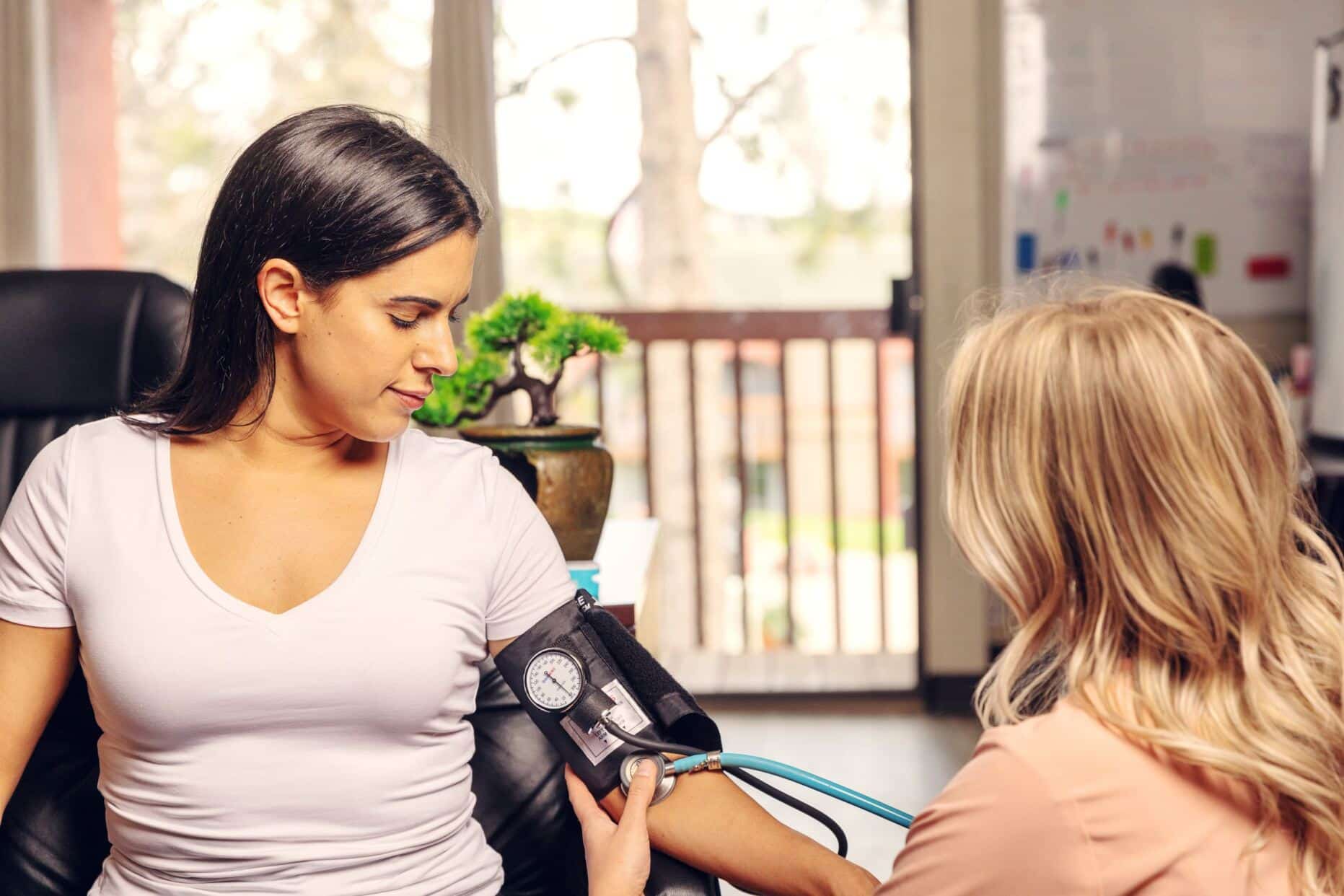Sniffing glue and huffing paint might seem fairly harmless, but they are considered to be inhalant abuse, and when left unchecked, they can become exceedingly dangerous and can even be fatal.
Inhalant abuse often involves using products in ways in which they were never intended to be used. Unlike drugs that require you to buy from a dealer or others that require doctors’ prescriptions, inhalants are often everyday items and can include glues, spray paints, markers, inks, cleaning fluids, and substances in aerosol cans such as deodorants and hair spray. Other types of liquid or gas inhalants include lighter fluid (butane), gasoline, propane, nail polish remover, vegetable sprays, air fresheners, gases used for refrigeration, and nitrous oxide (laughing gas), and chloroform.
There are several other types of inhalants since there are over 1,000 items that are extremely harmful to inhale. Alternate names for inhalants include gluey, huff, and rush.
Another popular type of inhalant is whippets, which involves inhaling the gases from aerosol cans of whipped cream. Nitrites are still another type of inhalant. This category includes amyl nitrite, a drug that is also known as poppers or snappers.
Because these substances are often ordinary items, inhalants are popular among young users who do not have access to other types of substances. Unfortunately, these substances are also a problem for all ages. Recognizing the signs of inhalant abuse and seeking prompt treatment can prevent a future tragedy.
Inhalant abuse is widespread among the young. A 2020 survey found that 212,000 people twelve or older had an inhalant abuse disorder.
Inhalant Addiction and Abuse
Users abuse inhalants by sniffing with their noses or inhaling them with their noses or mouths. Breathing in the substances deeply is a practice known as huffing. Choosing to abuse these types of drugs brings chemical fumes from the substances to the lungs and then into the bloodstream. The blood then takes the chemicals to the brain and to other parts of the body.
To use inhalants, users often inhale the fumes directly. They also sometimes trap the fumes in balloons or paper or plastic bags and inhale the fumes from those containers. Or they sometimes soak rags with inhalants and stuff the rags into their mouths.
Regardless of how they ingest the substances, users usually take inhalants to get high. Inhalants tend to work quickly and the effects last for minutes. To prolong this high, users often inhale frequently over a certain time period, increasing the danger of this type of substance use disorder.
A particular drug, amyl nitrite, is a popular inhalant. While people also use amyl nitrite to get high, they also use it to improve their sexual performance. Like other inhalants, amyl nitrite has a legal, legitimate use, in this case, as a medication to treat angina. This is yet another example of how inhalants are used for both legal and illegal purposes.
These illegal uses can produce effects that range from mild to moderate to severe. These effects can be dangerous, even lethal. Here are some signs that a loved one is abusing an inhalant:
- Nausea
- Loss of Appetite
- Acting Drunk
- Unbalances and unable to keep focus
- Hidden empty spray bottles or chemical-soaked cloth.
- Chemical odors on breath or clothing
- Paint or other stains on face, hands, or clothes
Short-term Effects of Inhalants
Inhalant users inhale substances because they alter their brains and affect the central nervous system. This makes inhalants psychoactive substances. Inhalants typically make you feel high by stimulating your body and lowering your inhibitions. They then slow down your body like an anesthetic.
They make you seem drunk by slurring your speech, making you euphoric and dizzy, hurting your coordination, and producing hallucinations. If you inhale heavily, you might develop a headache and be drowsy for hours. Once again, nitrites are a different category of inhalants. They relax your muscles and dilate your blood vessels instead of impacting the central nervous system.
Long-Term Effects of Inhalant Abuse
Long-term effects of inhalant abuse include problems with your coordination, muscle weakness, weight loss, and even dementia and damage to the central nervous system. The drug can also produce mental problems such as disorientation, irritability, and depression. Some of the effects can be reversed while others can’t. Heavy inhalant use often produces negative school-related consequences for young users including absences, failing grades, and a loss of interest in school.
Other effects can make inhalant abuse easy to spot. Users might have runny and red noses or mouths, mouth spots or sores, the odor of chemicals on their breaths, or paint stains on their clothes or bodies. They might seem dazed, drunk, anxious, or excited, or they could be suffering from nausea or a poor appetite.
Overdose Symptoms of Inhalant
Sudden sniffing death is one particularly frightening consequence of inhalant use. This syndrome can occur if a user inhales a substance just one time and it has killed young people with no other health problems. It often involves the fumes from propane, butane, or aerosol cans.
Inhalant abuse can be fatal in other ways. It can cause breathing problems. People have suffocated inside the plastic bags they were using to inhale substances. They have also suffocated or asphyxiated, when the fumes from the inhaled substances replaced the oxygen in their lungs.
Still other users have choked to death after they’ve inhaled vomit. Since inhalant use affects the brain, users have also died from brain seizures and convulsions and after lapsing into a coma.
Like other harmful substances, using inhalants can hurt your heart by affecting your normal heartbeat. This could lead to cardiac arrest and death. The substances also damage your kidneys and liver. Since they make you intoxicated, they can also lead to accidents that could cause injuries or death.
Inhalant Withdrawal and Detox
Inhalant abuse can clearly create a lot of short-term and long-term effects. It can even be deadly. That’s why withdrawing and detoxing from the substances are so important.
Like other abused substances, inhalants disrupt the normal functioning of the brain. Toluene is a substance commonly used as an inhalant in the form of a shoeshine spray known as Texas shoeshine. Studies have shown that toluene can increase the production of dopamine in the brain. Dopamine is a neurotransmitter, or brain chemical, that affects the reward and pleasure centers of the brain. Changes in the brain’s dopamine production can lead to addiction.
If you go through a withdrawal from inhalants, you might experience some of the same types of symptoms experienced by people undergoing a drug withdrawal. You might have headaches or insomnia, or you might feel nervous, panicky, or depressed. If you are addicted to inhalants, your body might actually crave them and feel physical pain when they’re gone.
Although the detox process can be painful, it’s necessary. Removing the inhalants from your body is important in order to live a healthier life. A detox (detoxification) center will do this. You might want to consider entering a detox center affiliated with an inpatient rehab facility. A stay at this type of drug rehab facility could help you address and treat your physical and mental pain.
People might deny that they’re addicted to inhalants, but the chemical smells on their breaths and the stains on their clothes might tell a different story. Denial is common when people are abusing or addicted to harmful substances. Talk to a Intake Coordinator
Take The First Step Towards Recovery
Rehab Treatment Process
- Step 1 – Intake: When you arrive at your facility you will be assessed by the medical professionals to determine your treatment through detox, as well as your rehabilitation program.
- Step 2 – Detox: After your assessment or intake you will be taken to your room where you can rest and be monitored while you go through the withdrawal of your drug use. Detox can range from 1 day to a week, depending on the drug of choice and the user.
- Step 3- Rehab:After you finish detox you will be ready to begin your addiction treatment, which can range from a variety of different options. This is when you will be able to meet others, attend lectures, participate in group or individual counseling, and learn the tools you need to stay clean.
- Step 4- Aftercare: When your time at the facility is over, you will have to go back to your life. This can be a challenge for a lot of people, but part of your treatment includes aftercare. This is usually outpatient counseling in a group or individualized setting, where you are slowly introduced back to your life and responsibilities.
Coming to terms with your own inhalant use can be difficult. You might not think you have a problem until someone points it out to you. That’s why it’s important to stay connected to friends and family members. They can help you identify your problem, encourage you throughout the course of your stay in rehab or other treatment, and continue to support you after your treatment ends.
Helping a Friend or Family Member Address Their Inhalant Addiction
Staying close to friends and family members can also help other inhalant users. The friends and family members could stage an intervention, a meeting in which people gather to address the users’ inhalant use. Once again, research is helpful. The more you can learn about the users’ inhalant problem, the more equipped you are to discuss it with the users and find ways to help them.
essing your loved one’s addiction.
Do
- Make sure they are not high when having the conversation
- Tell them that you love them and care about their well-being
- Tell them that you know about their addiction
- Offer them hope
Don’t:
- Wait for your loved one to hit rock bottom to have this conversation
- Have this conversation alone, bring other loved ones who cares
- Bluff; stand your ground on any promises or threats you make
- Don’t use confrontational or aggressive communication
The Bottom Line: You Can Beat Inhalant Addiction
If you’ve reached this point it is hard to deny the fact that you’re serious about beating your Inhalant addiction, and that is something to have pride in and celebrate. Your life matters and there is no reason why you should allow a drug to dictate the rest of your life when help is available.
Remember, choosing to go into a Inhalant rehab treatment center for Inhalant abuse will help you rid yourself of the horrible side effects you’ve had to endure, extend your life span, and most importantly place you on track towards regaining you own life. So don’t fight addiction alone. Instead allow us to help you live the life you deserve to have.
Payment Options for Inhalant Abuse Treatment
To treat an inhalant addiction, you could enter different kinds of group or individual therapy. You could participate in different kinds of outpatient programs. You could also stay at an inpatient rehab facility.
This type of treatment can be expensive, but you shouldn’t let the costs scare you. In fact, many medical insurance providers can pay for some of your treatment cost, since substance use disorder use is a medically recognized disorder. We can help you understand your insurance and see how much your of rehab your benefits will cover. We want to help you make the rehab process as less stressful as possible.
Medical disclaimer:
Sunshine Behavioral Health strives to help people who are facing substance abuse, addiction, mental health disorders, or a combination of these conditions. It does this by providing compassionate care and evidence-based content that addresses health, treatment, and recovery.
Licensed medical professionals review material we publish on our site. The material is not a substitute for qualified medical diagnoses, treatment, or advice. It should not be used to replace the suggestions of your personal physician or other health care professionals.






